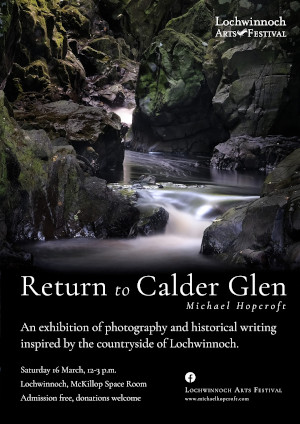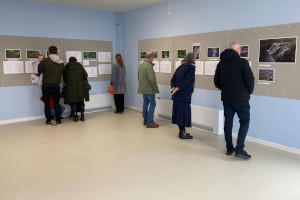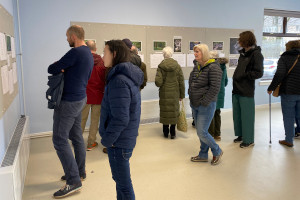About this project
From first time author, Michael Hopcroft, Echoes from Calder Glen is an exploration, in photography and prose, of the human and natural histories of Calder Glen, a river valley in Renfrewshire, Scotland. This website presents a small sample of a much larger body of work which the author hopes, in the near future, to publish in book form.
Photography
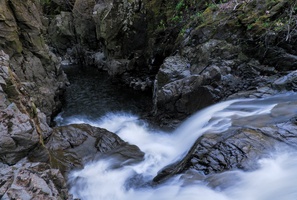
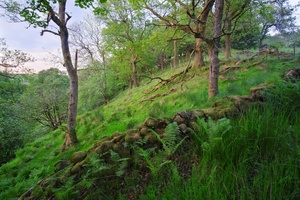


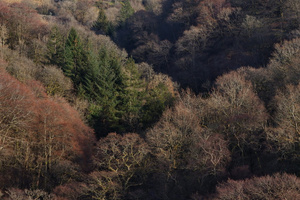
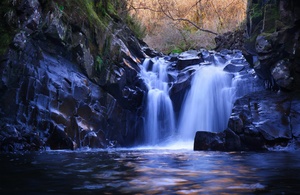
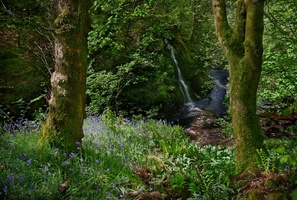
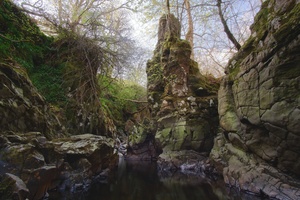
Words
- Introduction
- Part I. The Lower Glen
- 1. The Way to Ravenscraig

- 2. Bridgend Dam
- 3. A Pleasant Hour

- 4. Laundry Girls

- 5. The Old Doctor
- 6. Sorrow Linn
- 7. The Low Road
- 8. Miller's Linn
- 9. The Bleaching Burn
- 10. The Horseshoe Hero
- 11. Ravens' Craig
- 12. Black Linn
- 13. A Shared Space
- 14. Garrat's Linn
- 15. The Tow Brig
- 16. The Scouring of the Glen
- Part II. The Middle Glen
- 17. Tappilicoch
- 18. Ye Echoes that Ring
- 19. The Land of Wilson
- 20. The Land of Tannahill
- 21. Noah's Flood
- 22. Out of Sight
- 23. Knockan Linn
- 24. Tippennie Robin
- 25. The Cottar's Neuk
- 26. The Lost Words
- 27. Grizzie Montgomerie
- 28. Gone to Earth
- Part III. The Upper Glen
- 29. Where Elm Trees Grow
- 30. John Orr's Linn
- 31. Swallows' Craig
- 32. Reikan Linn
- 33. The Killing Times
- 34. The Dreaming
- 35. Moniabrock
- 36. The Deep Ones
- 37. Last of the Wildwood
- Epilogue: Into the Muirs
Exhibitions
On Saturday 16 March 2024, as part of Lochwinnoch Arts Festival, a second Echoes from Calder Glen exhibition will be held at the McKillop Institute, Lochwinnoch, subtitled Return to Calder Glen (RTCG). Continuing from last year's exhibition, RTCG will present a new range of Michael Hopcroft's photography of Calder Glen, as well as eight original prose pieces exploring new aspects of the human history of the glen. These include Laundry Girls, The Low Road, Miller's Linn, The Scouring of the Glen, The Land of Wilson, The Land of Tannahill, Noah's Flood and John Orr's Linn.
On Saturday 18 March 2023, as part of Lochwinnoch Arts Festival, the first Echoes from Calder Glen exhibition was held at the McKillop Institute, Lochinnoch. Presented for the first time were a range of Michael Hopcroft's photography of the glen taken between the spring of 2020 and the summer of 2022. In addition to this were ten original prose pieces examining: the Victorian tourist attraction to Calder Glen (The Way to Ravenscraig, Come Bounteous May, A Shared Space); individual landmarks in the glen (Garrat's Linn, Tappilicoch, Knockan Linn, Reikan Linn); as well as other diverse themes and meanings in the history of the glen (Songsters, The Lost Words, Grizzie Montgomerie).
About the author
First time author Michael Hopcroft has been researching the local history of Renfrewshire for more than 15 years. Raised in the village of Houston but now living in Lochwinnoch with his wife and two children, he has a particular interest in the role of landscape in both shaping human history and in offering us a means to connect with our past. Combining his interests in history, landscape and photography, Echoes from Calder Glen is the first in an intended three-part series which will explore the historical landscape of Lochwinnoch, with future installments to document Lochwinnoch's northern uplands, situated directly above the glen, and its lochs and wetlands, below.
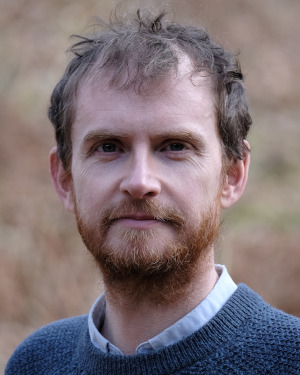
The origins of this project
The origins of this project can be traced back to the spring of 2020: the season in which normal life was put on hold and society entered a near stasis as the COVID-19 pandemic and its impacts on everyday life first spread across the country. It was during those uncertain weeks and months that I, with my two daughters (then aged nine and seven), in common with no doubt countless others around the world, turned with renewed enthusiasm to our local countryside as a source of interest and inspiration. Cut loose from the normal rhythms of modern life, of the necessity, and even the thought, of school and so many of the other prevailing structures of work and sociality, we roamed freely, alone together, for days on end: each day seeking to uncover new places and new paths to follow. And though we had already, by that time, lived in the village of Lochwinnoch for several years, it was only then, in that peculiar and unprecedented moment of freedoms both lost and gained, that we first truly “discovered” the beautiful river valley on our doorstep: Calder Glen.
In retrospect our discovery of the glen that spring was somewhat serendipitous. It will be remembered by many in Scotland that the start of the COVID-19 pandemic coincided with a spell of exceptionally fine and dry weather. For weeks on end the river Calder ran low, almost dry, and the river bed, so often the scene of a foaming torrent, became to us in our wanderings an inviting pathway: a pathway which drew us further and further into what felt like a different world. Drawn to return again and again, we delighted in uncovering new scenes of captivating beauty: deep pools, towering crags and spectacular waterfalls within a couple of kilometres of our home that we hitherto didn't know existed.
With this sense of discovery came the immediate impulse to share: an impulse which first found expression in photography. Long a hobbyist photographer, I began by sharing images with friends and family. Over time, however, with the motivation simply to do some semblance of justice to the beauty of the places we visited, I found myself spending more and more time refining my photography. In Calder Glen I had found, for the first time, a muse that truly made me wish to elevate my craft.
In addition to the impulse for communication, the glen also awakened in me a desire to learn. In the beauty and seeming infinite complexity of the glen there was everywhere to be seen the tendrils of great branches of knowledge: geology, ecology, and what became, to me, a great field for discovery, the glen's human history. In researching this subject in detail over the following four years I have discovered that, what initally felt like a timeless, unstoried “wilderness”, is in fact a terrain which is rich with human stories. And in uncovering details from the past which resonated with me, at times for reasons I did not fully understand, I began to explore these “echoes” in writing. A process of articulation as much to myself, as to others.
By these combined processes—in exploring the glen through both photography and writing—I have been excited by many noble ideas: the influence of landscape on the human psyche; the opportunity for history to broaden our imaginations for the future. There is however, also a much simpler story here. In the preface to his American Ornithology of 1814, Lochwinnoch writer, Alexander Wilson, likened his endeavours to that of a young boy he once encountered, who delighted in searching his native countryside for new wild flowers to take home to show to his mother. At the heart of this project is the same motivation: the child-like impulse, simply, to share with others the beauties I have found.
Where is Calder Glen?
Precise definitions of “Calder Glen”, exactly where it begins and ends, may vary. In this work, however, the name is taken to mean the steeply banked, densely wooded section of the Calder river valley which extends from the site of Bridgend Dam, at the northern outskirts of the Renfrewshire village of Lochwinnoch, to the vicinity of Clovenstone, a little over four kilometres upstream, where the banks shallow, the woodland fringe narrows, and the glen rapidly transitions into a very different terrain: that of open muirland.
How can I support this project?
Echoes from Calder Glen is a passion project. Producing the materials you see today has, however, taken a considerable amount of time as well as expense. If you find this project interesting and would be willing to make a small donation to help cover those expenses that would be greatly appreciated. You can make a donation (of an amount of your choice) via my Ko-fi account.

